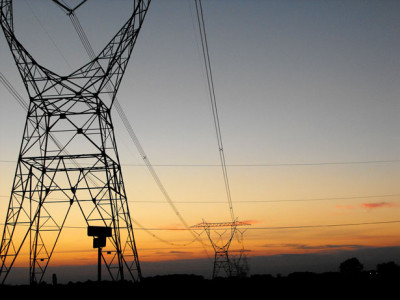Innocent K. Agbelie and Simon Bawakyillenuo from the University of Ghana ISSER write on the Ghanaian government’s gas policy and renewables development. This article was originally posted at urbanafrica.com.
From 2012 to the beginning of 2016, the Government of Ghana has been stretched to the limit due to the existing power supply infrastructure’s inability to provide constant and reliable electricity for domestic and industrial activities. This has resulted in the acute electricity supply load shedding known as ‘Dumsor’.
Ghana’s electricity supply market currently has an estimated 10 to 15 percent year-on-year demand growth rate, underpinned by increasing domestic and industrial demand. Prominent among the actions taken by government to placate highly agitated power consumers is the expansion of thermal plant facilities, which are powered by gas imported from Nigeria and also from the Atuabo Gas plant in Jomoro District in the Western Region of Ghana. Since 2000 the share of thermal plants in the total national installed capacity has been on the rise, contrary to the country’s avowed green economic development pathway. This share (computed from the difference between the total national installed capacity and total hydropower installed capacity as reported by the Energy Commission,2014 and 2015) went up from 16.8% in 2000 to 31.8% and 44.1% in 2005 and 2014 respectively.
In contrast, the total installed new renewables’ capacity is a woeful 0.1% of the national total power installed capacity in 2014, while the share of hydro-power installed capacity declined from 83.2% in 2000 to 55.8% in 2014. The increasing share of thermal power generation sources will increase Ghana’s carbon emissions, accelerating climate change and the associated extreme events.
According to the Minister of Energy and Petroleum, the Government of Ghana wants to ensure that the nation becomes self-sufficient in its energy supply. Accordingly, government intends to increase the share of thermal generation capacity to 80% in the total national installed power generation capacity in the next 10 years. These thermal plants, according to the Minster, will be powered by the cheapest source of fuel: gas. This pronouncement sadly evokes lots more questions than answers in the minds of many, including: “What is the future of renewable energy development in the next decade as it is uncertain what the remaining 20% of the installed generation capacity will constitute?”, “What will be the effect of having 80% thermal plants on Ghana’s carbon footprint in the next decade and beyond?”, “Does a cheap fuel source necessarily guarantee a clean fuel source?”
These and many other questions should prompt a rethink in the nation’s quest to become self-sufficient in not just energy, but clean and sustainable energy in the next decade.
Ghana’s 2010 National Energy Policy sets a target of 10% of total energy production from renewable energy sources by 2020. This will require an installed renewable energy generation capacity of 450MW. Although the target is backed by the Renewable Energy Act 2011 it is highly unachievable since the present total installedrenewable energy capacity as of 2014 is 2.5 MW representing 0.1% of the total national installed generation capacity.
Taking into account government’s pronouncement of increasing thermal share to 80% in ten years’ time, the future of the already unachievable renewable energy target is even more questionable. The thermally oriented energy mix projections into the future calls into question the sustainable development and green economy agenda of the country, given that Ghana is signatory to many international conventions and protocols that incorporate sustainability issues.
According to estimates by Ghana’s Environmental Protection Agency, the country’s annual greenhouse gas emissions have been on the rise, growing from 10 Mt CO2e in 1991 to 34 Mt CO2e in 2012. The bulk contributors to these emissions are the Energy, Agriculture, Forestry and Other Land Use (AFOLU) sectors. The country’s Third National Communication Report to the UNFCCC highlights that Ghana’s emission rate has grown significantly over the past two decades and contributes 33.66 Mt CO2e to global GHG emissions. With a projection of thermal plants making up 80% of the energy mix in the next 10 years, Ghana’s emissions are bound to increase significantly in direct contrast to the Policy Programme area of minimizing GHG emissions as outlined in the 2013 Ghana National Climate Change Policy.
Cheap-fuel thermal plants appear rather costly to the national and global environment in the medium to long-term. A more sustainable approach is required through commitment to policy strategies coupled with political will on the part of leaders, to take bold decisions in order to drive the renewable energy agenda just like they are doing on the thermal agenda. The fact is, the formulation of policies by policy makers are inadequate for a sustainable energy transition if practical actions are not taken to implement them. Civil society groups, research and advocacy organisations also need to put pressure on government so that it accomplishes its pronounced targets for renewable energy generation.


